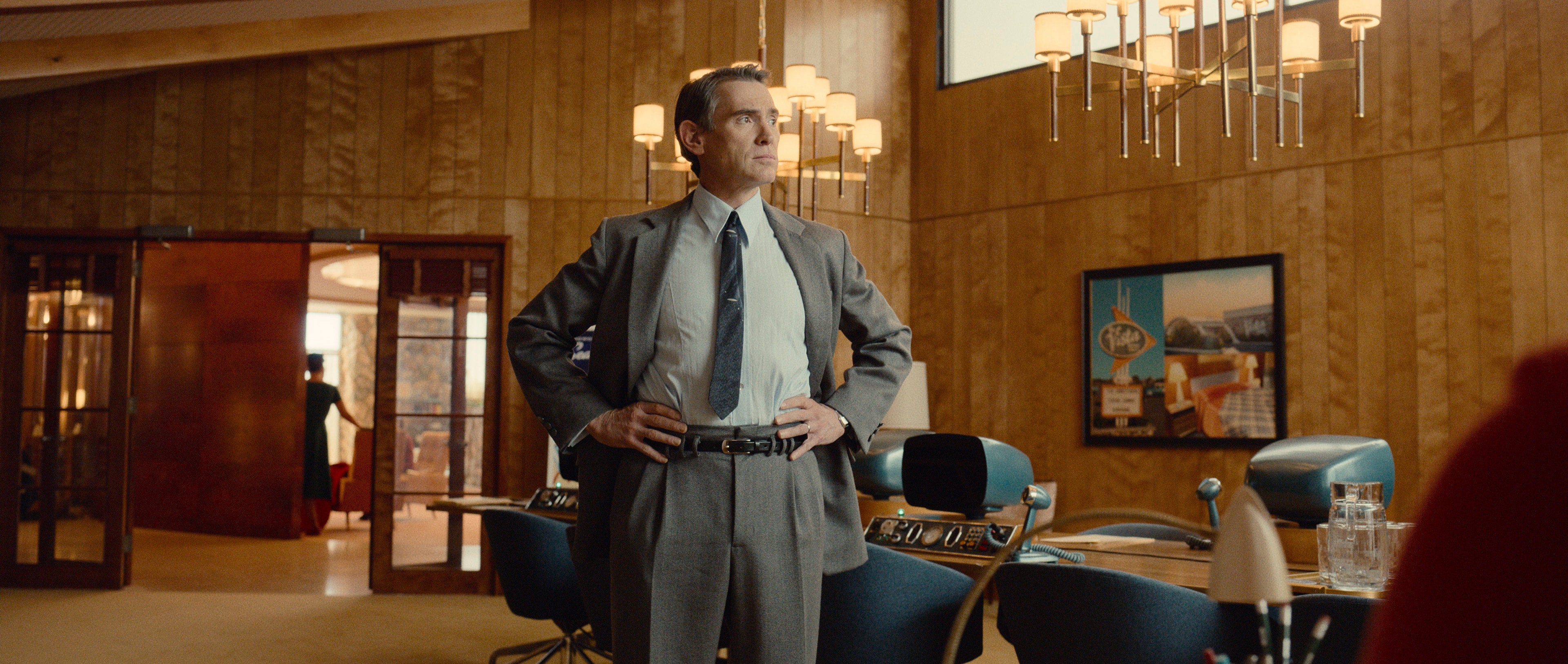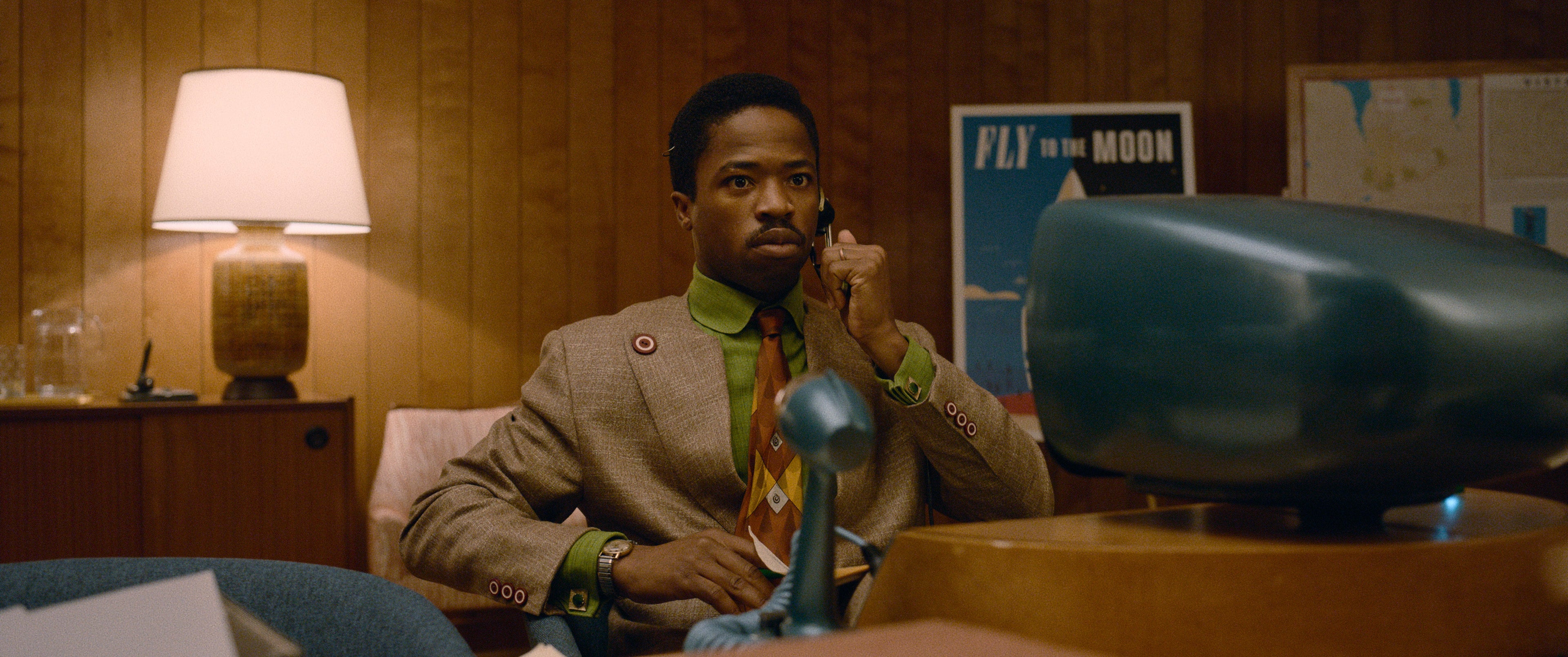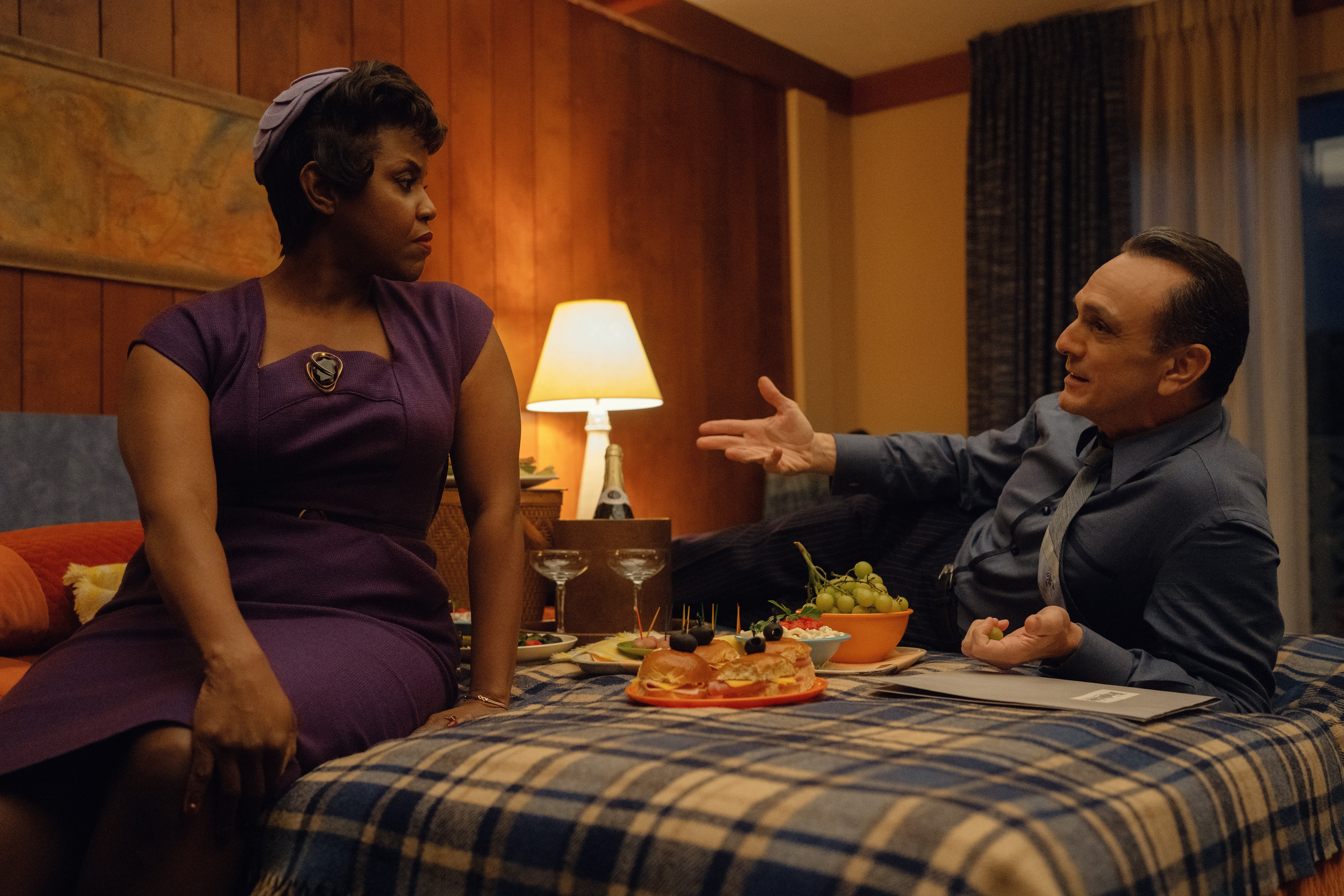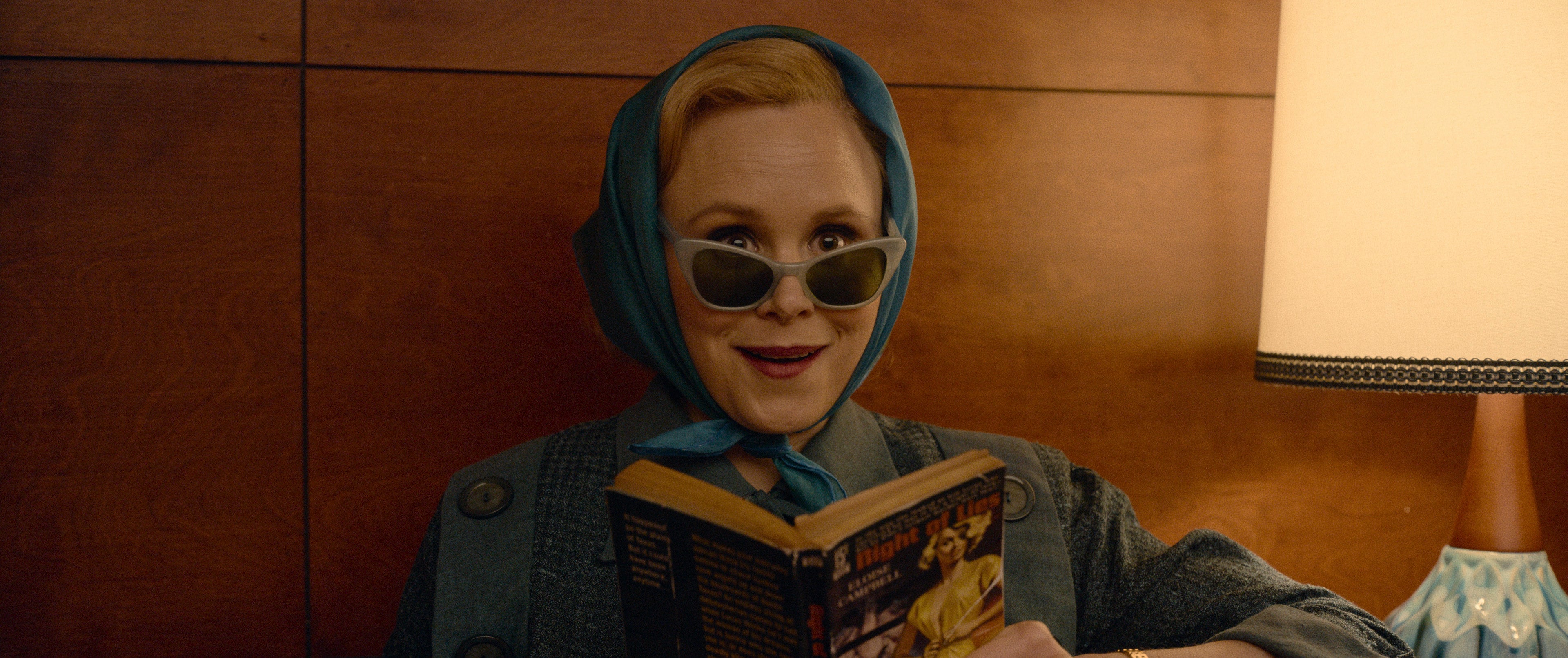Step into the future by way of the past on Apple TV+’s new series Hello Tomorrow!, which stars Billy Crudup as a chipper salesman for Brightside, a company hawking condos on the moon. The show’s take on a sci-fi retro-future version of the 1950s is one of its most striking elements, so Gizmodo was excited to speak with the show’s production designer, Maya Sigel.
What follows is a slightly edited and condensed version of our interview, which was conducted over video chat.
Cheryl Eddy, Gizmodo: Hello Tomorrow! takes place in an idealised version of the 1950s. What was your research process like when you were figuring out how the show should look and feel?
Maya Sigel: The amazing thing is there’s just so many resources for that era. From the minute I first read the script until we started shooting, and throughout shooting, the research process never stopped. It was just continually finding things and unearthing things that would be interesting for the show. There was a lot of stuff from that era that was kind of looking towards the future, which is cool to look at and reference. [Showrunners Amit Bhalla and Lucas Jansen] mentioned these Tex Avery cartoons that we we got some inspiration from for some of the gadgets. I looked at old World’s Fair photos and catalogues; a lot of the big art companies and appliance companies were were doing concept cars or concept kitchens or “homes of the future” that were nice to draw from. And for me, a lot of it was really thinking about roadside architecture and the Googie movement. [The show’s central location,] the Vista Motor Lodge, is this roadside hotel, and [I looked at] what draws people in from the road. There is a lot of that. And yeah, all the retro space-age furniture and architecture — [I looked at] decorating books from the era, postcards from old motels. Inspiration came from everywhere.
Gizmodo: Did you study and movies or TV shows from that era?
Sigel: Of course, I love movies and I’ve seen so many movies from the era, and I thought that it might be worth revisiting some specifically for this. But I’ll say that the films were not as much of a reference point as the photography and the architecture and the catalogues. It’s also, in my process, I find it’s nice sometimes to reference other cinematic things, but I feel like I always want to get away from that because you want to make something that is unique. I definitely wasn’t watching anything that was made recently, but I did go back and revisit some films from the ‘50s and ‘60s.
Gizmodo: You mentioned the motel which is the main setting for the show. How much of that was preexisting, or did you guys build it all? What about the interiors — were those elements created especially for the show?
Sigel: When I read the script for the pilot episode, I thought, “We’re shooting this in New York? I highly doubt that we’re going to find a space that’s really going to work, for how much we’re centered in this location for the season.” So it always felt to me like it was probably going to be a build. We did do a little bit of location scouting, but it became apparent pretty quickly that we were going to need all of these areas, and it would be best if they were connected — so you could do these walk and talk scenes, and it would just give the writers space to create whatever they wanted for for the duration of the season.

So the set was built; it was the lobby and the bar and diner, and then the conference room is attached to it. And then you could walk through these double doors down a hallway into one of our motel rooms, which was reconfigured a few times, depending on which character was in it. The exterior was a location that we found and made a bunch of modifications to. But a lot of our furniture was custom made; I really liked the idea of designing the architecture and the furniture together and having built-in things in each space. George DeTitta Jr. was my set decorator. He’s amazing. He and his team really sourced furniture, fixtures, and materials from all over the world, and a lot of things were then reupholstered in our [colour] palette.
Gizmodo: The gadgets on the show are one of my favourite parts about it: the “Holo-Table,” the hover cars, the hover briefcase, the video phones, the robots that perform a wide range of tasks and functions. Obviously, some of that must have come from the script, but how much freedom did you have to design those elements and what was that process like?
Sigel: Amit and Lucas had written in a ton of gadgets, and they came up with really funny names for all of them. We kind of pared it down because it was important to everybody that we do as much practically as possible. So everything was really was built, things lit up, and they did function, sort of — and then later, the VFX supervisor came in and helped whenever we needed it, cleaned things up and enhanced things, which was great. It really it was a big collaboration, but there was a lot of freedom … a lot of it was brainstorming and thinking about, I looked a lot at industrial design from the Art Deco era. That was a big inspiration.

The gadgets were really fun because it was this place where we could just be really whimsical, and kind of dream about, like, what would a dopp kit look like if it fed you your shaving cream and your razor and your toothbrush? Everything [was] rooted in in the 1950s, but some of the stuff, you know — it’s sort of silly and superfluous, but also just just really fun. I think they all feel like they have weight to them; it was important that they were a little bit clunky as well, and that they don’t always work the way that they’re supposed to.
Gizmodo: One of the things I personally really love to see in sci-fi is the portrayal of food — like all the weird food scenes in 2001: A Space Odyssey. But this show has so many good examples: the bartending robot, the hand-held popcorn popper, all those casseroles…
Sigel: The idea with the food was that there’s nothing that’s really fresh. You don’t really see people eating fresh fruits and vegetables in the show. You can really see it at Hartoonian’s, our market; my graphics team created all of those graphics [for the packages on the shelves] and it’s all these fun, kind of gross, freeze-dried or frozen or canned foods. In the 1950s, people were eating a lot of instant food and microwaving things and eating things out of boxes — you know, it seemed like that was the future, and that kind of freed people up labour-wise. So that was a big part of it.

But yeah, there’s no connection to nature and it’s not people preparing it either. It gives you this feeling like you’re removed from nature, and you’re removed from other people, and everything is automated and served to you by a robot or a machine. The “Kernel Fresh,” which is the popcorn popper — on a lot of our devices I wanted to add the dome in, so it kind of ties in with [the dome enclosing the Brightside development on the moon]. So we’ll use the plexi dome on top and it pops your popcorn and you open it. It’s funny — a lot of these things feel like a company would have to put a lot of money into something that’s just so specific and really only has one function.
Gizmodo: The surface of Hello Tomorrow! is very sci-fi and glossy, but there’s a current of sadness lurking below everything, as nearly every character is hiding from some truth or another. How did you go about capturing and conveying that blend of brightness and melancholy in the production design?
Sigel: I really approached it as designing it as a drama and not a comedy. The only things that were sort of, again, whimsical and funny were the gadgets. But otherwise, the world very much looks like a drama and is lit that way as well. I think it’s important that you see these people who [have to face that] you can’t escape. You can’t leave somewhere else to escape your problems. You can have all the gadgets, and the house, and all of that — like [Alison Pill’s character] Myrtle, really you’re stuck in this gold gilded cage, which is what the design of her house was for me. It’s just this golden cage. I think that there is also something about being this slave to capitalism and this endless consumerism, and feeling like nothing is ever enough. If you’re just concerned with getting the next thing, you’ll never you’ll never get enough. I think you see that in the world. I really wanted it to be beautiful and a fun world to be in. But there’s a much darker side to it.

The first four episodes of Hello Tomorrow! are now streaming, with new episodes arriving Thursdays on Apple TV+.
